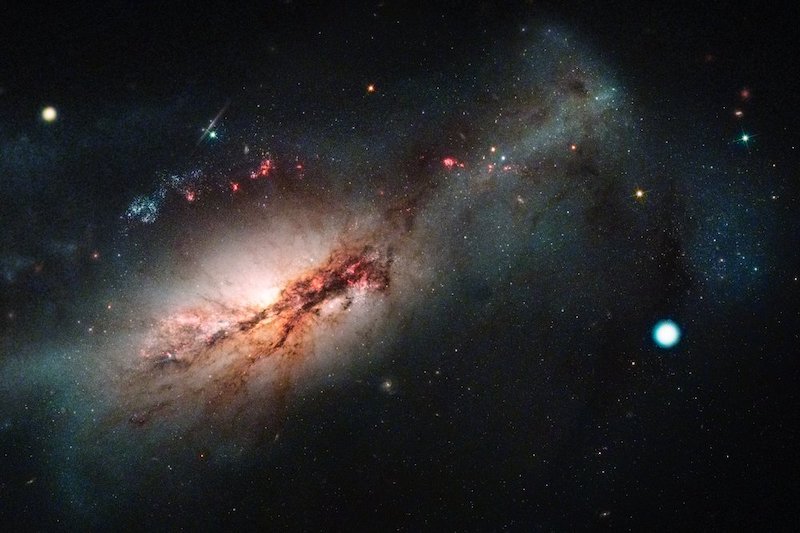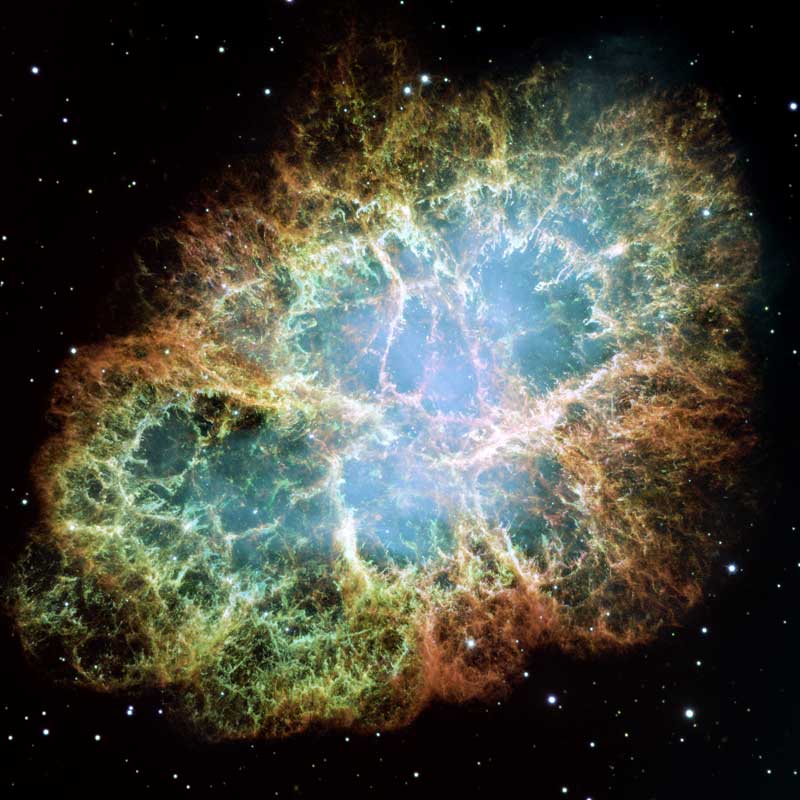
For the first time, astronomers have found convincing evidence for a new type of supernova – a new sort of stellar explosion – powered by electron capture. They announced their discovery in late June 2021. It’s a type of supernova predicted 40 years ago, but never observed until now. Astronomers designate this supernova SN 2018zd. It lies in a remote galaxy, NGC 2146, 21 million light-years away.
The findings solve a mystery about one of the sky’s most famous objects, the Crab Nebula. Astronomers believe this cloud in space may be the remnant of a supernova that exploded in the year 1054 A.D. These scientists said the Crab likely stemmed from an electron-capture supernova, too, like SN 2018zd.
The team published their research in the peer-reviewed journal Nature on June 28, 2021.
Daichi Hiramatsu, lead author of the study, said:
We started by asking ‘what’s this weirdo?’ Then we examined every aspect of SN 2018zd and realized that all of them can be explained in the electron-capture scenario.
Type Ia and Type II supernovae
The names and distinctions between different types of supernovae might seem bewildering. But it’s worthwhile to remember two primary types of supernovae whose physical explosion mechanisms are different from one another (The type names are, however, based on differences in their light spectra).
In other words, Type Ia and Type II supernovae start out as different sorts of objects, explode for different reasons, and leave behind different things.
Type Ia supernovae happen when a small, dense white dwarf star exists in a double system with another star. Before the white dwarf became a white dwarf, it was a star with a mass up to eight times that of our sun. In this scenario, the white dwarf pulls matter from its companion. When it’s pulled enough mass to reach a critical limit, it undergoes runaway nuclear fusion and explodes as a Type Ia supernova. In the process, the white dwarf most likely disintegrates completely, leaving nothing behind.
Type II supernovae happen when a larger star – more than 10 times the mass of our sun – has reached the end of its life and its fuel. It then explodes in a so-called iron core collapse. The end product after this type of explosion is an exceedingly dense and small neutron star, or an even denser and smaller black hole.
An electron-capture supernova is a third type of supernova. It’s said to be a “missing link” between Type Ia and Type II. Astronomers have assumed since the early 1980s that electron-capture supernovae exist. One of the new study’s co-authors, Ken’ichi Nomoto, was one of the first to predict this possibility.
But, until now, there was no clearcut evidence anyone had seen an electron-capture supernova.
Super-AGB stars spawn electron-capture supernovae
And that might be because there was also little evidence for the progenitor stars that would cause electron-capture supernova. Astronomers call this kind of star super-AGB stars. That stands for massive super-asymptotic giant branch stars. The tongue-twisty name is a reference to where the star sits in the classic Hertzsprung-Russell diagram, which displays stars in various stages of their evolution.
A super-AGB star is a star in a late stage of its evolution. Like red supergiants, it has expanded to become large, cool and luminous.
A super-AGB star has an intermediate mass at around 7.5 to 10 times our sun’s mass. So it’s too massive to end up as a Type Ia supernova. And it’s not massive enough to become a Type II supernova.
Instead, for decades, astronomers have believed there must be a third type of supernova based on the electron-capture scenario.
What is an electron-capture supernova?
The astronomers behind this study identified six indicators necessary for a supernova to be an electron-capture supernova. SN 2018zd was the only one to agree with all six. Detailed Hubble Space Telescope images of the region, including the star before it went supernova, helped them with the identification.
Inside the core of a super-AGB star are oxygen, neon and magnesium atoms. When the core gets too dense, the neon and magnesium atoms start absorbing their electrons, which are particles found bound to the nucleus or cores of atoms. This absorption of electrons is known as an electron-capture reaction.
The electrons would normally keep the star’s core pressure up. But as the electrons are gobbled up, the core pressure reduces. Eventually the core collapses and the star explodes.
Voilà. An electron-capture supernova.

Theory and observation in agreement
There is a special gratification for a scientist when observations verify theory. Nomoto, co-author of this study, said:
I am very pleased that the electron-capture supernova was finally discovered, which my colleagues and I predicted to exist and have a connection to the Crab Nebula 40 years ago. I very much appreciate the great efforts involved in obtaining these observations. This is a wonderful case of the combination of observations and theory.
Was the Crab an electron-capture supernova?
In the year 1054 A.D., Chinese and Japanese sky-watchers recorded a supernova in our own Milky Way galaxy. It could be seen during daytime for 23 days and was visible at night for two years. In other words: it was bright. We can still see the remnant from this massive explosion, and we call it the Crab Nebula.
The supernova behind the Crab Nebula – SN 1054 – was, until now, the best candidate for an electron-capture supernova. But because the explosion happened a millennium ago, astronomers didn’t have all the details they needed to be sure. This new study helps bring up the confidence that SN 1054 was indeed the same kind of supernova as SN 2018zd. It also explains why SN 1054 was so bright. Las Cumbres Observatory reported:
Its luminosity was probably artificially enhanced by the supernova ejecta colliding with material cast off by the progenitor star as was seen in SN 2018zd.

An astronomical Rosetta Stone
Andrew Howell, of Las Cumbres Observatory and member of the team behind the study, said:The term Rosetta Stone is used too often as an analogy when we find a new astrophysical object. But in this case, I think it is fitting. This supernova is literally helping us decode thousand-year-old records from cultures all over the world. And it is helping us associate one thing we don’t fully understand, the Crab Nebula, with another thing we have incredible modern records of, this supernova. In the process it is teaching us about fundamental physics: how some neutron stars get made, how extreme stars live and die, and about how the elements we’re made of get created and scattered around the universe.
Bottom line: Astronomers have found observational evidence for an electron-capture supernova, a third kind of supernova that has been theorized for 40 years.











